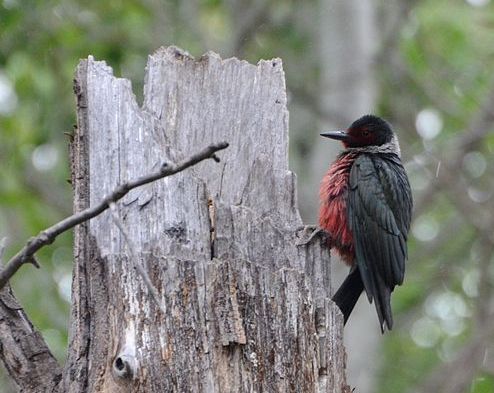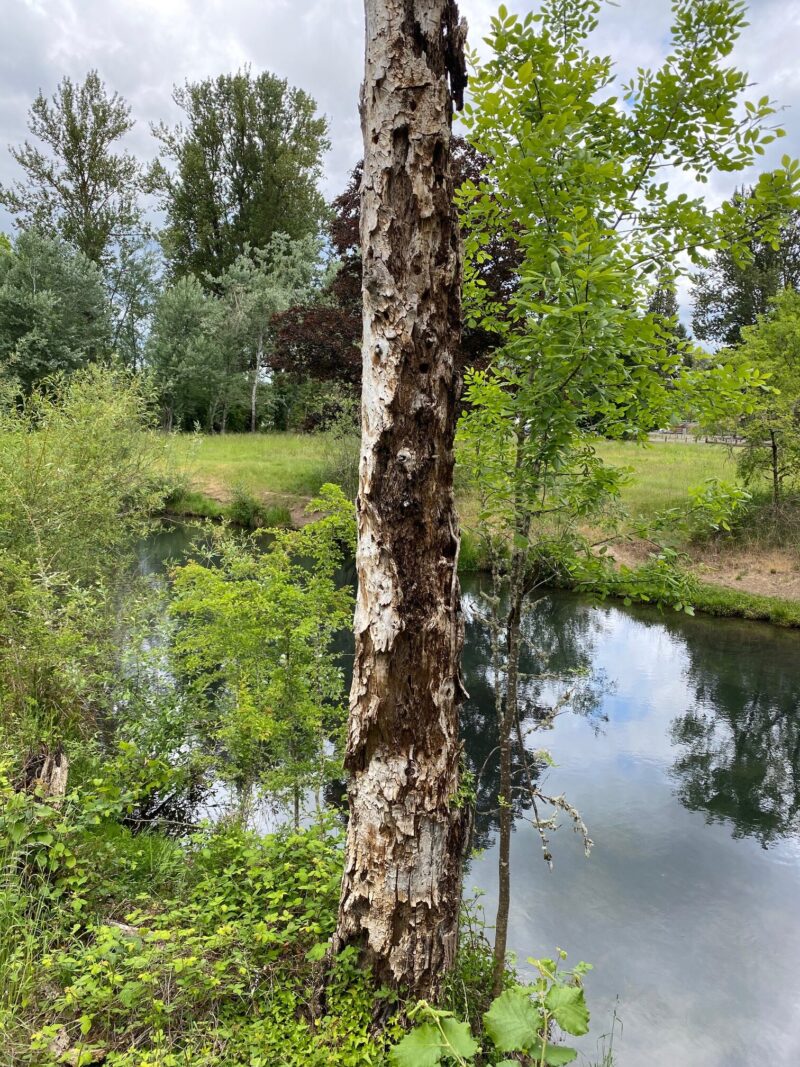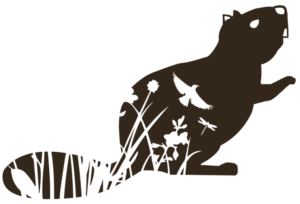Wildlife trees, beavers, and Lewis’s woodpecker
A Lewis’s woodpecker collected by Meriweather Lewis during the early 1800s expedition is the one remaining specimen from that collection. It is kept at Harvard university.
These birds need our help to boost numbers today. At least beavers are helping. How? It’s all about snags which become safe havens for this woodpecker. Beavers create snags by falling or flooding trees as their dams backup water forming wetlands. This could be viewed as damage at first, but it’s actually creating and supporting more life.
Trees that attrition are called wildlife trees. Dead wood is not dead. There is always life there, whether you can see it or not.
Trees that appear dead to us host a huge range of life. Snags serve as a home, food storage, hiding place, nourishment, and protection for living things, micro to macro.
The Lewis’s woodpecker flaps his wings more like a jay or crow than other woodpeckers. They are large at 10-11 inches tall and sometimes called a crow woodpecker. The bird has four toes on each foot, two in front, two in back. This design keeps the bird stable on vertical trees. They are spectacular in color: pink, silver, and a deep sea green.
Pairs may mate for life. Males and females look alike. Once eggs are laid, the parents take turns sitting on the nest to keep them warm- the female during the day and the male at night. Unlike other woodpeckers, they tend to catch flying insects more often than digging them out of trees. They also like acorns as well as other nuts, seeds, and fruits. They skillfully chop up nuts to store them in crevices of the tree where they live. The ponderosa pine and cottonwood are favorites to live in.
Native Americans view the woodpecker as a resourceful bird, deeply committed to caring and providing for his family. A woodpecker can symbolize determination, creativity, security, shamanism, uniqueness, wisdom, and sturdiness.
If you are out gathering firewood, try to leave snags that have holes or cavities that host animal homes. Instead, gather smaller diameter wood that cannot host bird nests.
Wildfires have caused woodpeckers to lose habitat. Because of beavers, they are gaining needed snags so they can raise their families and build back lost numbers. Beavers are filling in the missing pieces of landscape for these woodpeckers. When beavers shape water, they positively affect the health and well-being of all the moving parts and lives of a wetland. This brings stability and health to so many native wildlife species, and even us.
Hug a tree. Blow kisses at snags.
-Mary Ann Petersen, Guest Blogger
Mary Ann is a writer living in Eugene, Oregon. In a past life she may have been a beaver. If not, she was definitely a kingfisher or a crow.
www.maryannpetersen.com

Lewis's Woodpecker

 JOIN US in supporting beaver success and native wildlife habitat in our Oregon high desert landscapes.
JOIN US in supporting beaver success and native wildlife habitat in our Oregon high desert landscapes.